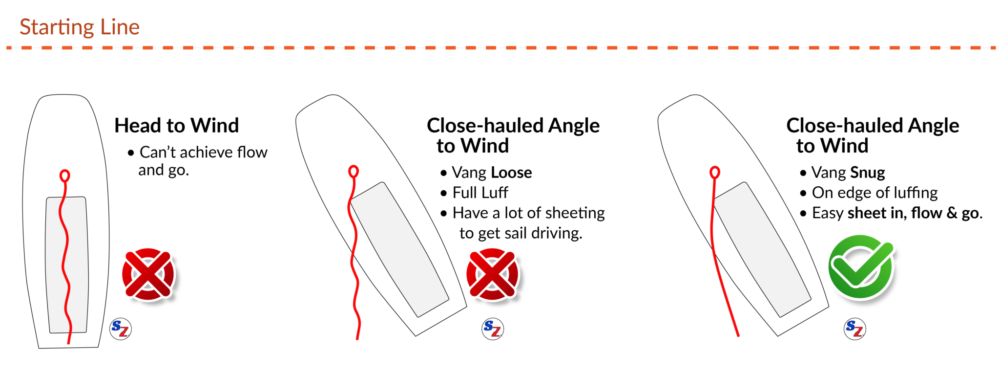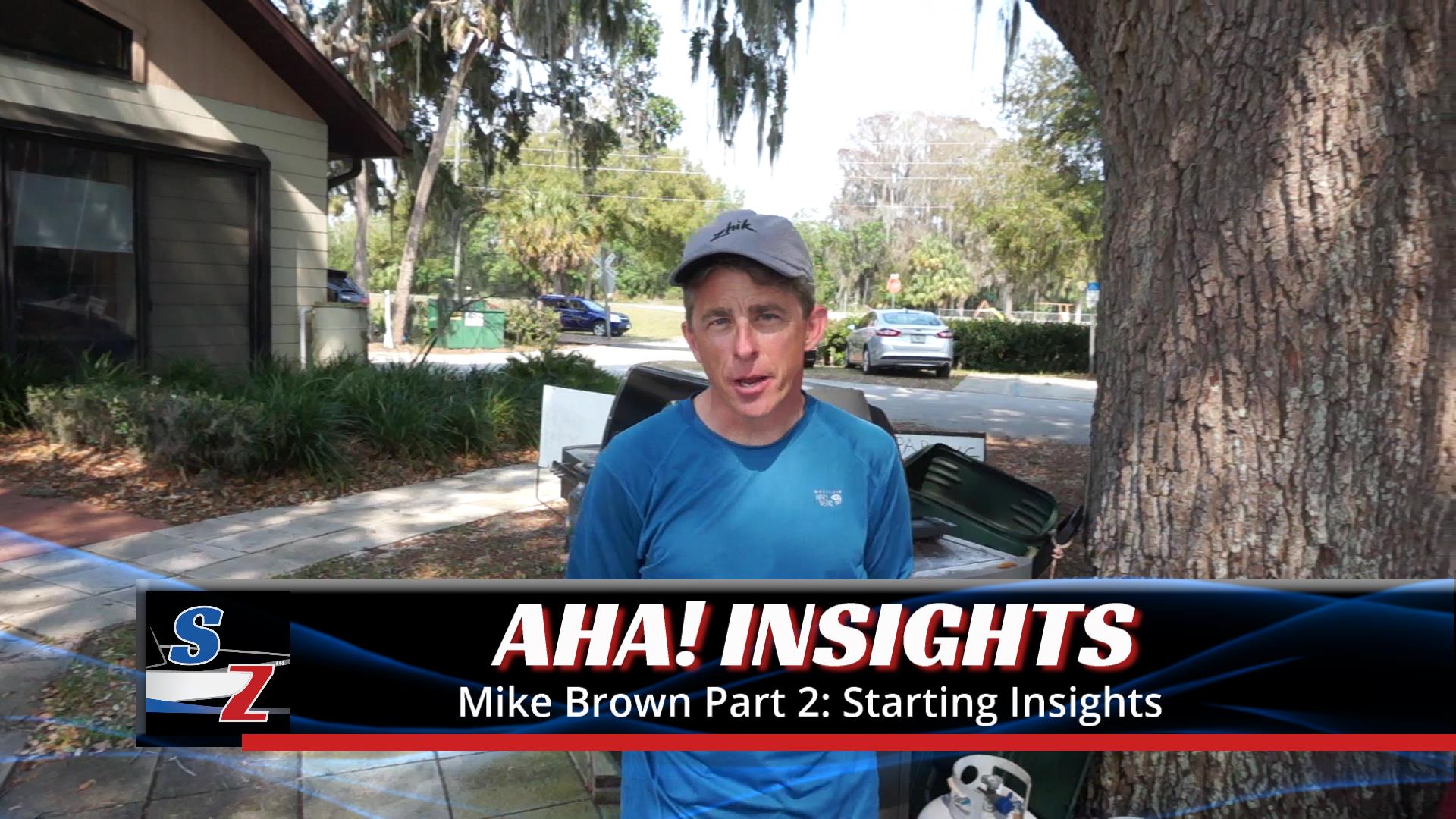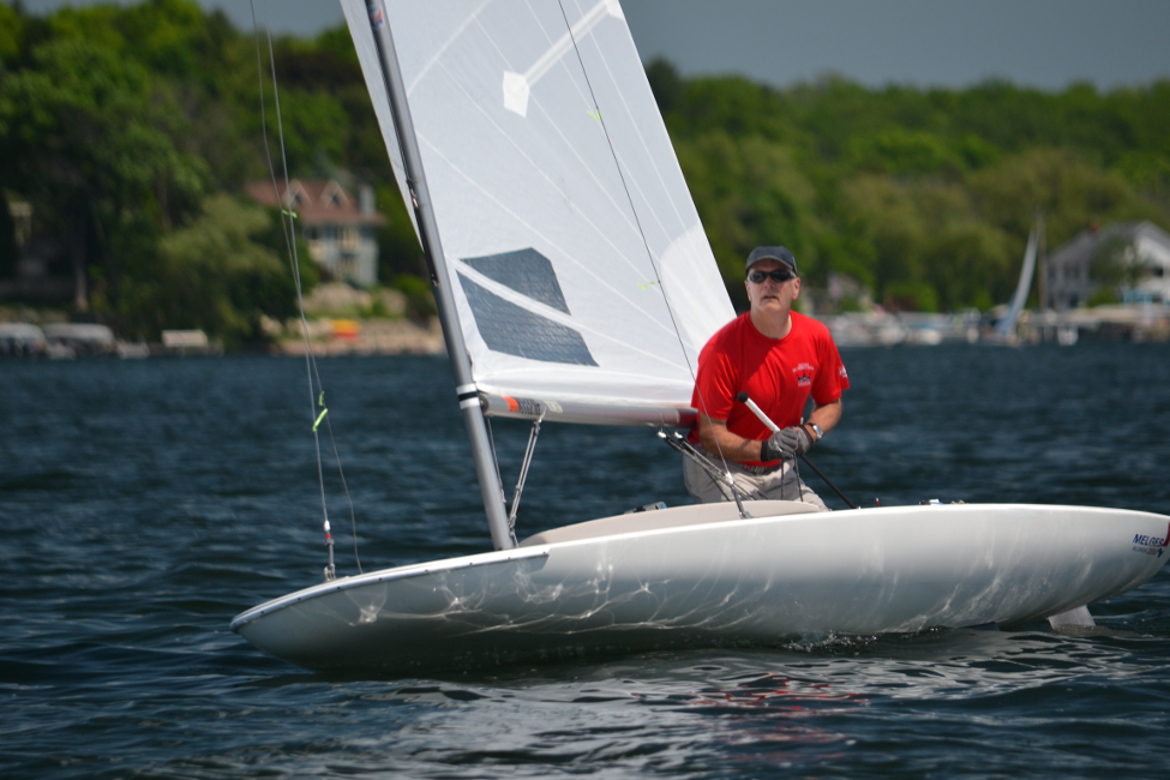This is Part 1 of a 2-part series with Allan Terhune, Jr., North Sails – Manager One Design North America Division. He shared ideas about starting with a long line at the 2023 MC Scow Train Wreck regatta at Lake Eustis, FL. In Part 2, he talks about approaching the Windward Marks.
The event was hosted by the Lake Eustis Sailing Club and is part of a yearly, three regatta “Midwinter Series” held there.
Allan has been focusing on sailing the Melges MC Scow, but he has a winning history sailing Etchells, J/70, J/80, J/88, J/105 and J/111. He brought a brand new MC Scow to this event and shares his thoughts on the new version.
The boat is really nice, right out of the box. Honestly, got the boat and brought it straight to Eustis and won the first race that I ever sailed in it…so you can’t really complain too much about that.
Allan Terhune, Jr.
Melges’ Andy Burdick (Lake Geneva Yacht Club) and North Sails’ Allan Terhune (Tom’s River Yacht Club) battled at the top, winning two races each. The rest of the three wins were taken by Rob Seidelmann (Cooper River Yacht Club), Bill Draheim (Rush Creek Yacht Club), and Andy Casey (Team LYRA), respectively. Andy Burdick prevailed by never finishing worse than a 4th place in any of the seven races.

Venue
(Lake) Eustis it’s a…lake, but it’s pretty big. It’s more open water sailing than you would think but it still has very lake-like characteristics – it’s pretty shifty and things change quite a bit…
Allan Terhune, Jr.

Starting on a Long Line
Line Bias
The starting line was rather long, so big gains could be had at the start with a small 5-7 degree line bias advantage to one end.
How to Check Line Bias (13:39)
- Position yourself to be able to move to the end that has the favored shift advantage at the gun.
- MC Scows can lurk well with both leeboards down.
- Boat angle should be close-hauled, just on the edge of a luff, with a snug vang. Allan marks his vang line to be able to check this quickly.
Positioning
Allan considers himself a bit of a lurker due to the ability for the MC Scow to hold it’s spot with both leeboards down ahead of the start. In our language, he seems to be between an Early Bird and a Lurker. With a long line, he hedges his bets by holding near the middle of the line and watching for which way the shifts are going and then moving towards the favored end with a few minutes to go.
We have an entire article on Starting Line Approaches. The top two buckets are “Early Bird” or “Gap Snatcher“. Gap Snatchers come in at least three styles.
- Early Bird
- Gap Snatcher
- Starboard Drifter
- Port Explorer
- Lurker (Starboard or Port)
Angle, Sail & Vang
He avoids being full head-to-wind. With no water flow over the blades and limited ability to control air flow, it’s hard to make a move. He stays at more of a close-hauled angle with his sail out and luffing, but at the edge of filling. He keeps his vang snug, but not tight, otherwise you will have a lot of sheet line to pull in to get the sail driving. Having the vang snug helps to get the leech to engage.
You have to have a little bit of vang tension on so that as you’re luffing, and you need a little sheet, the leech will engage just a little bit to get the boat going. Whereas, if there’s no vang on and you sheet in, you have to almost over sheet to get the sail to engage.
Allan Terhune, Jr.

Watch for Part 2 of this series where Allan talks about rounding the windward marks from approach to exit. Also, watch Andy Burdick discuss his starting line technique at Lake Eustis.




